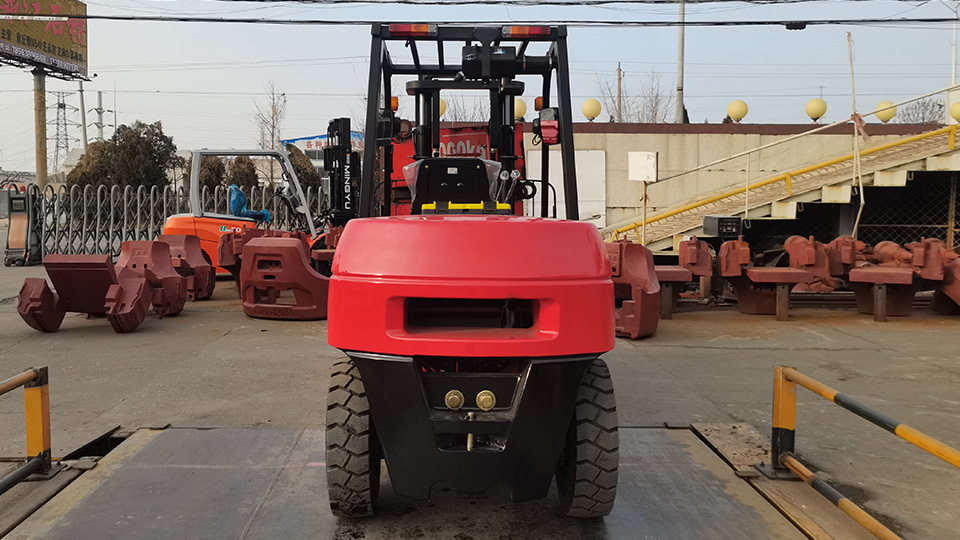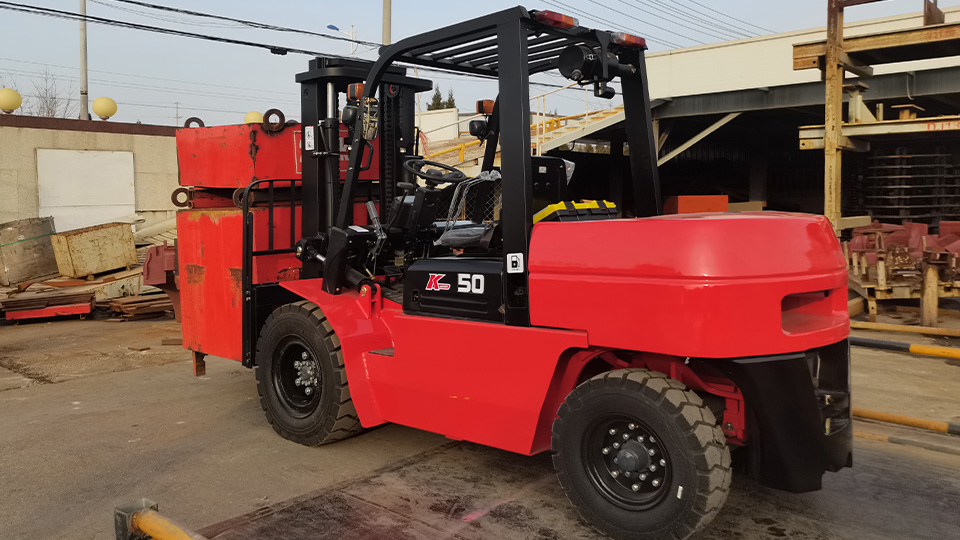
Reaching New Heights: Understanding Forklift Lifting Capabilities
The remarkable ability of a forklift to elevate substantial loads is fundamental to the efficiency of countless industrial operations. From stocking towering warehouse shelves to loading goods onto high trailers, the lifting height of a forklift directly impacts its versatility and suitability for specific tasks. However, the question of "how high can a forklift lift a load?" doesn't have a single, simple answer. It's a complex interplay of various factors, including the forklift's design, the type of mast, the load's characteristics, and crucial safety considerations. This technical article will delve into the intricacies of forklift lifting heights, exploring the different mast types, the factors that influence vertical reach, and the critical importance of operating within safe limits.
The Vertical Reach: Understanding Forklift Mast Types
The primary determinant of a forklift's lifting height is its mast. The mast is the vertical assembly at the front of the forklift that supports and guides the forks and the load. Different applications demand varying lifting heights, leading to the development of several distinct mast configurations:
1. Simplex (Single-Stage) Mast:
Description: This is the simplest mast design, featuring a single pair of inner rails that extend upwards from the stationary outer mast.
Lifting Height: Simplex masts offer the lowest lifting heights, typically limited to around 8 to 15 feet (approximately 2.4 to 4.6 meters).
Free Lift: Simplex masts generally have very limited or no "free lift," meaning the entire mast structure must extend before the forks begin to rise. This can be a disadvantage in areas with low overhead clearances.
Applications: Ideal for applications where high stacking is not required, such as loading and unloading trucks at dock level or moving materials at ground level.
2. Duplex (Two-Stage) Mast:
Description: Duplex masts consist of a stationary outer mast and two sets of inner rails. A primary hydraulic cylinder provides "full free lift," allowing the forks to raise a significant distance (often 40-60 inches or 1-1.5 meters) without increasing the overall height of the mast. Secondary cylinders then extend the inner rails to achieve the maximum lift height.
Lifting Height: Duplex masts typically offer lifting heights ranging from 10 to 20 feet (approximately 3 to 6 meters).
Free Lift: The significant free lift capability makes duplex masts suitable for working in areas with overhead obstructions, such as inside trailers or under mezzanines.
Applications: Versatile for both loading/unloading and stacking at moderate heights in warehouses and manufacturing facilities.

3. Triplex (Three-Stage) Mast:
Description: Triplex masts are the most common type found in modern warehouses. They feature a stationary outer mast and three sets of inner rails. A primary cylinder provides full free lift, and two additional hydraulic cylinders extend the intermediate and inner rails sequentially, guided by chains.
Lifting Height: Triplex masts offer the highest lifting heights among standard forklift types, often reaching 20 to 30 feet (approximately 6 to 9 meters) or even higher in some specialized models.
Free Lift: They also provide a substantial amount of free lift, enhancing their versatility in various environments.
Applications: Ideal for high-bay warehousing, where maximizing vertical storage space is crucial. They can efficiently stack and retrieve loads from tall racking systems.
4. Quad (Four-Stage) Mast:
Description: Quad masts are less common but offer the maximum reach for standard counterbalance forklifts. They incorporate a stationary outer mast and four sets of inner rails, utilizing a complex system of hydraulic cylinders and chains for extension.
Lifting Height: Quad masts can achieve lifting heights exceeding 30 feet (approximately 9 meters), with some specialized models reaching even greater heights.
Free Lift: They typically offer full free lift, similar to duplex and triplex masts.
Applications: Used in very high-bay warehouses or specialized applications where extreme vertical reach is necessary. However, the increased complexity can sometimes compromise visibility for the operator.
Beyond Standard Masts: Reach Trucks and Order Pickers
While counterbalance forklifts with the aforementioned mast types are common, specialized equipment exists for even greater vertical access:
Reach Trucks: These electric forklifts are designed for narrow aisles and high racking. Their pantograph or telescoping mechanisms allow the forks to extend forward, reaching into racking without requiring the entire truck to be positioned directly in front of the load. Reach trucks can often achieve lifting heights of 30 feet (9 meters) or more, with some high-reach models exceeding 40 feet (12 meters).
Order Pickers: These machines are specifically designed for retrieving individual items from high shelves rather than handling full pallets. The operator platform elevates with the forks, allowing for manual picking at height. While their lifting capacity is generally lower, some order pickers can reach picking heights of up to 40 feet (12 meters).
Factors Influencing Lifting Height and Capacity:
The maximum lifting height a forklift can achieve is only one part of the equation. Several other critical factors influence the height at which a forklift can safely lift a specific load:
1. Load Capacity and Load Center:
Inverse Relationship: There is an inherent inverse relationship between lifting height and load capacity. As the forks are raised higher, the stability of the forklift decreases due to the shifting center of gravity. Therefore, the maximum weight a forklift can safely lift at its maximum height will always be less than its rated capacity at a lower height (typically specified at a standard load center of 24 inches or 600 mm).
Load Center Impact: The load center, which is the distance from the front face of the forks to the center of gravity of the load, significantly affects the lifting capacity. Loads with a larger load center (i.e., the weight is distributed further away from the mast) reduce the forklift's lifting capacity at any given height.
Data Plate: Every forklift is equipped with a data plate (or nameplate) that clearly indicates the rated load capacity at various lift heights and load centers. Operators must always consult this plate to ensure they are operating within safe limits.
2. Forklift Stability:
Stability Triangle: Forklift stability is based on the "stability triangle," formed by the front two wheels and the center of the rear axle. The forklift's center of gravity, along with the center of gravity of the load, must remain within this triangle to prevent tipping.
Height and Stability: Raising the load shifts the combined center of gravity upwards and outwards, making the forklift less stable and increasing the risk of forward tipping.
Attachments: Adding attachments to the forklift, such as clamps or fork extensions, alters the center of gravity and reduces the overall lifting capacity and stability at all heights.

3. Mast Design and Condition:
Mast Strength: The structural integrity of the mast is crucial for safe lifting at height. Masts are engineered to withstand specific loads at their maximum extension.
Wear and Tear: Regular inspection and maintenance of the mast, including chains, rollers, and hydraulic cylinders, are essential. Worn or damaged components can compromise the mast's strength and stability, especially at higher elevations.
4. Operating Environment:
Floor Surface: Uneven or sloping surfaces can significantly reduce a forklift's stability, especially when lifting loads at height. Operations on such surfaces require extra caution and may limit the safe lifting height.
Wind Conditions: Outdoor operations in windy conditions can create instability when loads are lifted high, particularly with large or non-compact loads.
Overhead Obstructions: Operators must be acutely aware of overhead clearances, such as pipes, lighting fixtures, and doorways, to prevent collisions when raising the mast and load.
5. Operator Skill and Training:
Smooth Operation: Jerky movements and sudden stops can destabilize the forklift, especially with elevated loads. Trained operators are skilled in smooth and controlled maneuvering.
Load Handling Techniques: Proper load engagement, centering, and securing are crucial for maintaining stability at height.
Awareness of Limitations: Operators must be fully aware of the forklift's load capacity at different heights and load centers, as indicated on the data plate.
Safety First: Operating Within Lifting Limits
Exceeding a forklift's safe lifting height or load capacity is extremely dangerous and can lead to serious accidents, including:
Forklift Tip-Overs: The most significant risk, potentially causing severe injury or fatality to the operator and bystanders, as well as damage to the forklift and surrounding property.
Load Instability and Dropping: Overloaded or improperly balanced loads lifted too high are at a higher risk of shifting or falling, causing damage and potential injury.
Damage to the Forklift: Overstressing the mast and hydraulic system can lead to component failure and costly repairs.
To ensure safe operation when lifting loads at height, the following guidelines must be strictly adhered to:
Always consult the forklift's data plate to determine the safe load capacity for the intended lifting height and load center.
Never exceed the rated capacity for the specific lifting height.
Ensure the load is stable and properly centered on the forks.
Travel with the load as low as possible (typically 4-6 inches above the ground).
Avoid sudden starts, stops, and turns when the load is elevated.
Operate on level and stable surfaces whenever possible.
Be aware of overhead obstructions.
Undergo thorough training on safe forklift operation and load handling procedures.
Conduct regular pre-shift inspections of the forklift, including the mast and hydraulic system.
Conclusion:
The lifting height of a forklift is a critical performance characteristic, directly influencing its utility in various material handling applications. Understanding the different mast types and their capabilities is essential for selecting the right equipment. However, the maximum achievable lifting height must always be considered in conjunction with the forklift's load capacity at that height, the stability of the machine, the operating environment, and the skill of the operator. Safety must always be the paramount concern, and strict adherence to the forklift's data plate and safe operating practices is crucial to prevent accidents and ensure efficient and productive material handling operations at any elevation.
Name: selena
Mobile:+86-13176910558
Tel:+86-0535-2090977
Whatsapp:8613181602336
Email:vip@mingyuforklift.com
Add:Xiaqiu Town, Laizhou, Yantai City, Shandong Province, China